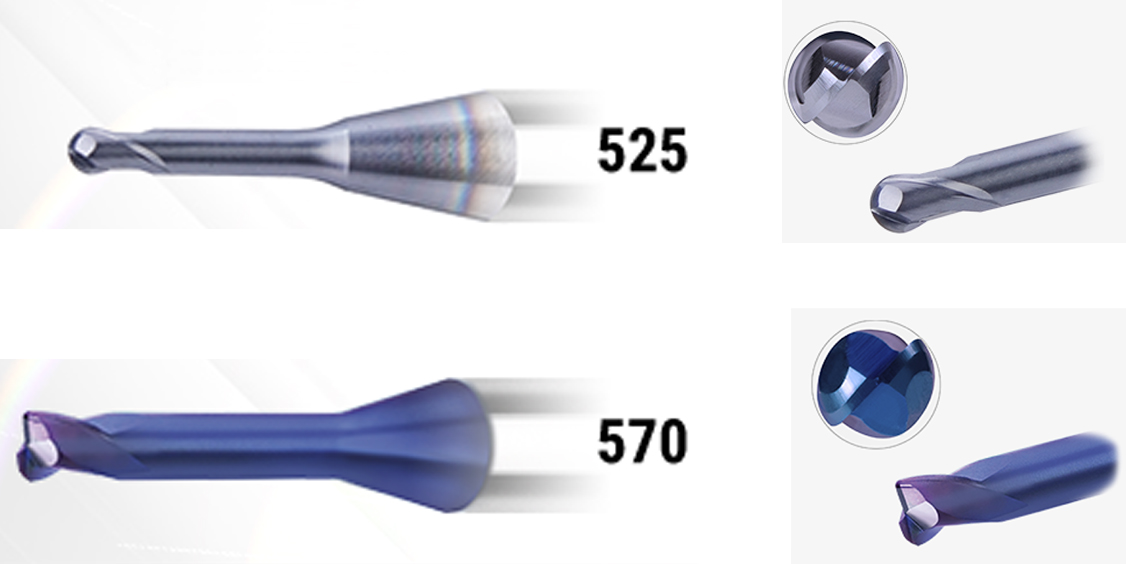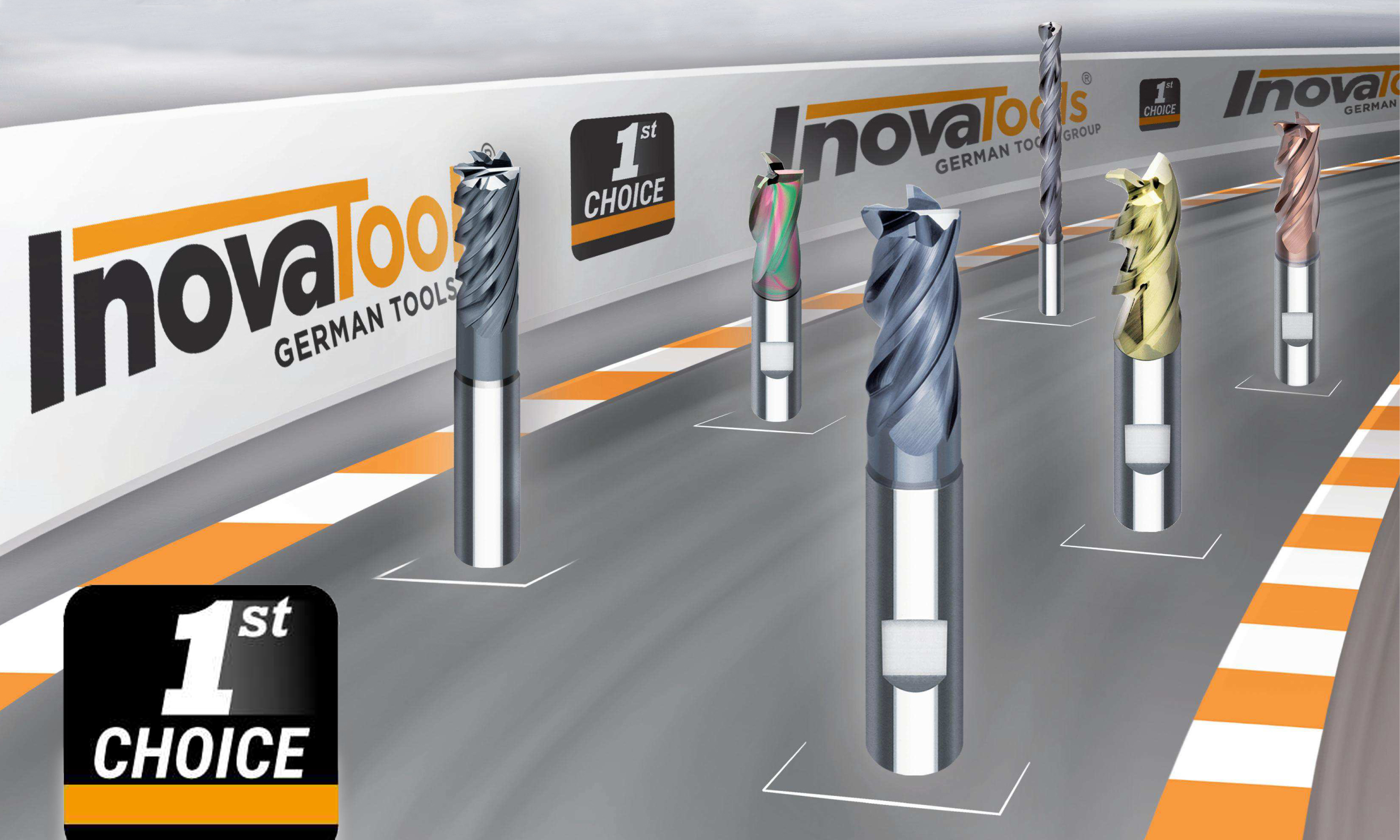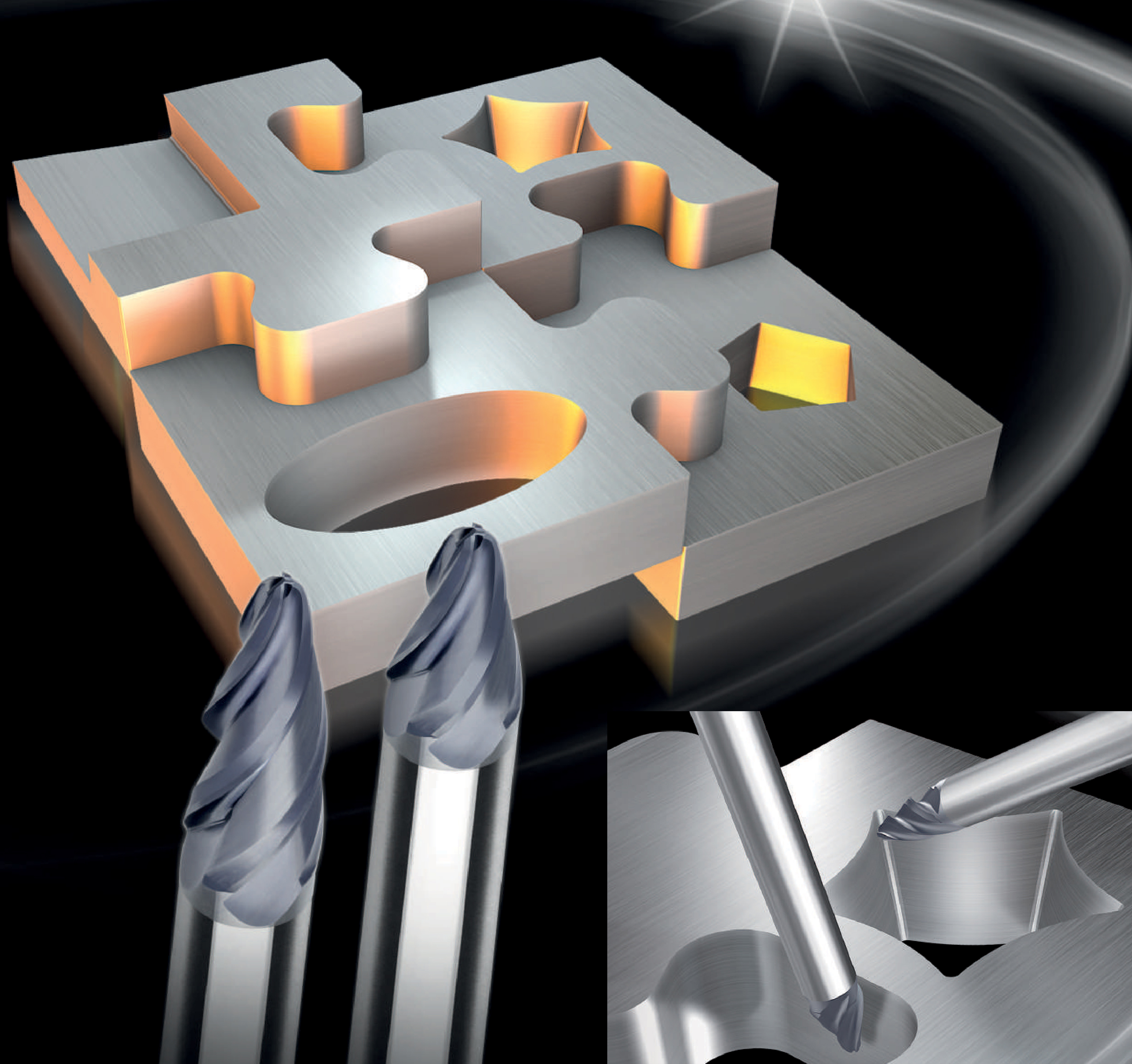 In tool and mold construction, highly abrasive graphite materials and extremely hard materials such as alloy steels of up to 65 HRC or more are dominating the industry. The cost-effective creation of 3D contours and shaped elements impose demanding requirements on the mills and on process management.
In tool and mold construction, highly abrasive graphite materials and extremely hard materials such as alloy steels of up to 65 HRC or more are dominating the industry. The cost-effective creation of 3D contours and shaped elements impose demanding requirements on the mills and on process management.
Inovatools USA LLC, a Germany-based company with U.S. offices in Hartland, Michigan, offers a broad product range of high-performance solid carbide mills that meet the exacting requirements in mold, fixture and die manufacturing.
“Our special range of mill products is designed for the most varied of applications in this machining segment,” said Douglas Kline, managing director of Inovatools USA LLC. “The tools have been adapted for the relevant applications and materials in terms of substrate, geometry, chip control and coating.”
The tools include universal, roughing, finishing and special mill series’ such as mini-shank, copying and full-radius end mills in an array of designs and dimensions and featuring application-optimized high-performance coatings.
Make the First Choice
 With its First Choice Inovatools designations, the tooling specialist offers users the opportunity to identify tailor-made tools for a company’s specific cutting requirements. One example is machining stainless steel. First Choice can identify top tools in the Inovatools online shop or in its main catalog, including for tool and mold construction.
With its First Choice Inovatools designations, the tooling specialist offers users the opportunity to identify tailor-made tools for a company’s specific cutting requirements. One example is machining stainless steel. First Choice can identify top tools in the Inovatools online shop or in its main catalog, including for tool and mold construction.
Another search function is the InoCut cutting data program. The program allows users to search for tools by the application and specified cutting values. In the complete catalog, the tools are marked as ‘First Choice’ accordingly.
Available tooling that can be marked as First Choice includes the 525-ball nose end mill (0.2 mm to 6.0 mm) and 570 bull nose copying end mill (0.4 mm to 6.0 mm) mold construction tools for HSC operation in steel material hardness’ from 52 to 65 HRC. They feature state-of-the-art cutting-edge geometries, stable release mechanisms with a balancing effect, defined edge preparation and optimized microgeometry ensure top performance, maximum precision and process reliability. Smooth, high-performance coatings such as VaroCon (525) or NanoCon (570) support rapid chip clearance.
For steel processing, Inovatools offers the FightMax and FightMax INOX mill series (for stainless steels). With a high-performance coating that provides a high resistance to heat, FightMax mills can withstand high levels of tool wear over very long periods, even at high feed rates and cutting speeds.
The solid carbide curve segment cutting (CSC) mills in the CurveMax series are an example of Inovatools tool technology with adapted process technology for copy milling. In tool and mold construction, the solid carbide curve segment mills in tangential and conical form shorten the process times required for finishing complex, freeform surfaces in a wide variety of materials.
 The CurveMax has a special geometry that permits bigger path distances and line jumps during pre-finishing and finishing. Although the working radius is larger than that of a traditional full-radius mill, the tool still has the same diameter, which leads to a reduction in process times. The larger engagement width means the cutting edge does not suffer from wear at any point. Combined with the extremely smooth, high-performance VaroCon coating, this helps to increase the tool’s service life. The larger and flatter overlap reduces roughness and ensures surface finishes even better than those created by traditional full-radius mills. Inovatools offers the CSC-CurveMax mills in conical and tangential form as four-edged cutters for finishing in different sizes and radii.
The CurveMax has a special geometry that permits bigger path distances and line jumps during pre-finishing and finishing. Although the working radius is larger than that of a traditional full-radius mill, the tool still has the same diameter, which leads to a reduction in process times. The larger engagement width means the cutting edge does not suffer from wear at any point. Combined with the extremely smooth, high-performance VaroCon coating, this helps to increase the tool’s service life. The larger and flatter overlap reduces roughness and ensures surface finishes even better than those created by traditional full-radius mills. Inovatools offers the CSC-CurveMax mills in conical and tangential form as four-edged cutters for finishing in different sizes and radii.
The curve segment milling technology also opens up production options. For example, undercuts, freeform surfaces and variable setting angles can be reliably created. In addition, complex contours can be pre-finished and finished, even on narrow inside radii.
According to Kline, “HSC machining of graphite electrodes, for example, using diamond-coated tools is the method of choice in tool and mold construction. Only using high-quality, robust tools can cutters comply with narrow tolerance zones while milling materials quickly and cost-effectively.”
Diamond edition
Inovatools has copying and ball nose end mills featuring the Dia-Dur coating in its range for machining graphite electrodes. The excellent adhesion properties of CVD high-performance Dia-Dur coating gives the Diamond edition tools similarly good physical and chemical properties to that of natural diamond. The tools feature extreme hardness and smoothness, high chemical resistance, excellent thermal conductivity and abrasion resistance.
With the Diamond edition, Inovatools highlights its comprehensive expertise in this area. For example, the end mills (tolerance H5) with radius tolerances of ±0.003 mm are ground with extreme precision, and the concentricity of the full and corner radius end mills is 0.005 mm. Selected carbide grades are essential to ensure consistently high quality.
For more information on Inovatools USA LLC, phone (810) 991-4716 or visit https://inovatools.com/V3/en/
Contact Details
Related Glossary Terms
- abrasive
abrasive
Substance used for grinding, honing, lapping, superfinishing and polishing. Examples include garnet, emery, corundum, silicon carbide, cubic boron nitride and diamond in various grit sizes.
- alloy steels
alloy steels
Steel containing specified quantities of alloying elements (other than carbon and the commonly accepted amounts of manganese, sulfur and phosphorus) added to cause changes in the metal’s mechanical and/or physical properties. Principal alloying elements are nickel, chromium, molybdenum and silicon. Some grades of alloy steels contain one or more of these elements: vanadium, boron, lead and copper.
- chemical vapor deposition ( CVD)
chemical vapor deposition ( CVD)
High-temperature (1,000° C or higher), atmosphere-controlled process in which a chemical reaction is induced for the purpose of depositing a coating 2µm to 12µm thick on a tool’s surface. See coated tools; PVD, physical vapor deposition.
- chip clearance
chip clearance
In milling, the groove or space provided in the cutter body that allows chips to be formed by the inserts.
- clearance
clearance
Space provided behind a tool’s land or relief to prevent rubbing and subsequent premature deterioration of the tool. See land; relief.
- edge preparation
edge preparation
Conditioning of the cutting edge, such as a honing or chamfering, to make it stronger and less susceptible to chipping. A chamfer is a bevel on the tool’s cutting edge; the angle is measured from the cutting face downward and generally varies from 25° to 45°. Honing is the process of rounding or blunting the cutting edge with abrasives, either manually or mechanically.
- feed
feed
Rate of change of position of the tool as a whole, relative to the workpiece while cutting.
- fixture
fixture
Device, often made in-house, that holds a specific workpiece. See jig; modular fixturing.
- gang cutting ( milling)
gang cutting ( milling)
Machining with several cutters mounted on a single arbor, generally for simultaneous cutting.
- hardness
hardness
Hardness is a measure of the resistance of a material to surface indentation or abrasion. There is no absolute scale for hardness. In order to express hardness quantitatively, each type of test has its own scale, which defines hardness. Indentation hardness obtained through static methods is measured by Brinell, Rockwell, Vickers and Knoop tests. Hardness without indentation is measured by a dynamic method, known as the Scleroscope test.
- milling
milling
Machining operation in which metal or other material is removed by applying power to a rotating cutter. In vertical milling, the cutting tool is mounted vertically on the spindle. In horizontal milling, the cutting tool is mounted horizontally, either directly on the spindle or on an arbor. Horizontal milling is further broken down into conventional milling, where the cutter rotates opposite the direction of feed, or “up” into the workpiece; and climb milling, where the cutter rotates in the direction of feed, or “down” into the workpiece. Milling operations include plane or surface milling, endmilling, facemilling, angle milling, form milling and profiling.
- milling machine ( mill)
milling machine ( mill)
Runs endmills and arbor-mounted milling cutters. Features include a head with a spindle that drives the cutters; a column, knee and table that provide motion in the three Cartesian axes; and a base that supports the components and houses the cutting-fluid pump and reservoir. The work is mounted on the table and fed into the rotating cutter or endmill to accomplish the milling steps; vertical milling machines also feed endmills into the work by means of a spindle-mounted quill. Models range from small manual machines to big bed-type and duplex mills. All take one of three basic forms: vertical, horizontal or convertible horizontal/vertical. Vertical machines may be knee-type (the table is mounted on a knee that can be elevated) or bed-type (the table is securely supported and only moves horizontally). In general, horizontal machines are bigger and more powerful, while vertical machines are lighter but more versatile and easier to set up and operate.
- tolerance
tolerance
Minimum and maximum amount a workpiece dimension is allowed to vary from a set standard and still be acceptable.
